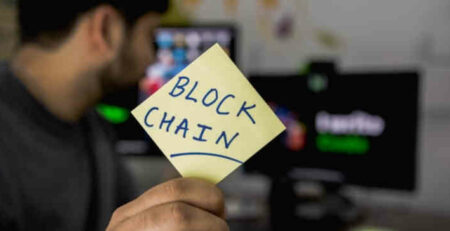6 Reasons Employee Mediations Fail and What to do Instead
If you have ever worked in the business world, then you know that disputes can be a normal part of the landscape at times. When these disagreements cannot be resolved through traditional methods, managers have to think outside the box.
While some disputes in the workplace are mild and can be resolved pretty quickly, others are more extensive and can cause problems throughout the company. In some cases, calling in a mediator is the only way to resolve the issue.
Wondering what happens when mediation does not work? Keep reading to find out what you can do instead.
What is Employee Mediation?
When conflict arises within a company, it can change the entire culture of the workplace faster than anything else. This is because when there is a dispute between two people, other employees tend to take sides.
Because of this, you can have a dispute that starts just between two people or departments turn into something that affects the entire company. At times, there is nothing that management can do to resolve the problem and bring peace back into the company.
Employee mediation is one of the most common methods of resolving issues that arise between people in the workplace. It can show your employees that you and the company value their employees and the diversity they bring.
This strategy entails bringing in an outside neutral part to come in an attempt to bring back the peace.
In typical mediation scenarios, the neutral party will meet with the two parties to outline how the process will work. Once started, they will typically allow both parties to talk out their side of the dispute and then offer certain solutions or compromises that can help.
How Can Mediation Help to Solve Disputes?
Mediation has been used for many years to assist in resolving disputes for many different companies. Having someone that does not have emotions tied to the issue can help resolve it.
While in some cases, management can act as a mediator for certain situations, it is often viewed as a better practice to bring in someone else. This other person can be more objective with the situation since they are not in it all of the time.
Keep in mind that there are people who are professional mediators who have quite a bit of experience in resolving disputes. If you are going to hire someone to come in and mediate for your employees, you will want to look for someone who is trained to handle any situation.
What Happens When Employee Mediation Fails?
When employee mediation fails, this usually indicates that the dispute has gone beyond the realm of being able to fix it. At this point, managers have to make decisions as to what they should do next.
The failure of employee mediation means that a settlement was unable to be reached because one or both parties cannot decide on a reasonable course of action.
Since there are several reasons for mediation failure, it is difficult to pinpoint exactly what went wrong. However, what happens after this can make the difference between keeping your employees and having to let someone go.

6 Reasons Employee Mediations Fail
While employee mediation has been the chosen method of resolving issues in the workplace for many years, it is not always the most effective method. Several reasons exist to explain why these mediation methods sometimes fail.
Keep reading to learn more about the most common reasons employee mediations fail.
1. Not Enough Preparation
As with anything in the business world, preparation is necessary for a successful overall outcome. Whether you are negotiating a deal or trying to resolve employee conflict, preparation is necessary.
When employee conflict arises, and it is deemed that a mediator is needed, management should ensure that the mediator is well prepared to handle the situation. This means that all the information is divulged so that the mediator can get to the heart of the issues.
Additionally, it is also important that each party involved in the mediation be prepared with their side of the problem. If they come to the meeting without proper preparation, then there is not much the mediator can do to help resolve the situation.
The bottom line is that for a successful mediation, all parties involved should be prepared for the meeting. This includes not only their side of the story but documentation that may support the bigger issues at hand.
2. Conditions are Too Limited
Oftentimes, disputes take time to resolve and cannot be boxed into just a few hours with a mediator. Because of this, many employee mediations end unsuccessfully just because there is not enough time.
In many cases, if given time and opportunity, situations amongst employees can be resolved peacefully and successfully. However, if you are only allowing a certain amount of time, then it is likely that the problem will not be resolved, at least not completely.
Studies have shown that conflict resolution takes as long as it takes and is not something that can be rushed. This means that mediation does not fit the situation and will most likely fail.
3. Parties Involved are Not Willing to Budge
In some cases, when there is conflict in the workplace, it is because the parties involved are extremely stubborn and unwilling to change their minds. This means that if you have two very strong-willed people in opposition to each other, you are likely to have more conflict.
Most likely, in a situation such as this, the conflict exists because both parties insist that they are right about an issue and will not be dissuaded. When this occurs, it can become extremely difficult for others to get their jobs done.
As management, it is your responsibility to first discuss the issue with them and if that doesn’t work, plan a mediation to help. Bringing in a neutral party is the best way to keep most of the emotions at bay.
What makes an unsuccessful mediation is if the two parties continue to refuse to compromise. This often results in a stalemate where neither party is willing to compromise.
4. Underlying Issues
In many instances of conflict in the workplace, the issues may not be what they seem on the surface. This means there could be underlying issues that are in place that make mediation ineffective.
If the parties involved have either past unresolved issues, it makes it difficult to fix what is going on at the moment. This is because if a mediator or management is not aware of other problems, they may not be able to help properly.
It could also be that the company as a whole has underlying issues that are not divulged to the negotiator that could be important to the issue at hand. When this happens, any conflict management is most likely to be tainted.
At the end of the day, if you are going to use mediation the neutral party must understand everything that may be involved in solving the problem.
5. Expectations are Misunderstood
If you have never been involved in an employee mediation, then you may not understand what goes on in one. This means that when it comes to sitting down in mediation, the expectations of what is going to happen are somewhat distorted.
Before a mediation is set up, the mediator and management should sit down and discuss what the expectations are for the meeting. This will help keep the focus on the actual problem instead of something outside of it.
At the same time, the employees involved should also understand what the expectations are before the meeting begins. This can include either management telling them ahead of time or the mediator laying them out at the start of the meeting.
Whatever the case, it is important that a purpose for the mediation is set and that all parties involved understand this. Many mediations have failed simply because all parties did not understand the bottom line.
6. Emotions Running High
Depending on the issue at hand, sometimes mediations fail because one or both parties are allowing their emotions to speak for themselves. When this happens, the conflict cannot be resolved because one or both parties usually end the meeting prematurely.
Whether the dispute is personal or professional, it could bring with it many emotions that can run out of control during a mediation. This is especially true with the mediator attempting to get them to talk about their feelings.
In many cases, mediations such as these have failed because one or both parties have gotten out of control or they have stormed out of the room. When this occurs, the mediation is deemed unsuccessful because it is unlikely that the parties will be willing to show up again.
What Can You Do Instead of Employee Mediation?
If you are facing conflict in the workplace and are not sure how to go about resolving it, you may have tried to do so through mediation. While mediation does not always fail, many have been unsuccessful for one reason or another.
Many managers and business owners are turning away from mediation for workplace conflicts and are instead trying new methods. It has been proven that these methods are much more effective in the long run than simple mediation.
Here are a few of the most common methods of resolving conflict in the workplace without using mediation:
1. Have an open-door policy
Oftentimes in the workplace, when conflict arises, it is typically because someone feels like they are not being heard. When you create an open-door policy, it allows employees to let their voices be heard, which can diffuse many conflicts quickly.
2. Assess the situation before getting involved
Some employee conflicts are more severe than others within the workplace. A great manager knows when to get involved and when to let things take a natural course through the conflict.
3. Create an expectation for employees to attempt to resolve issues on their own first
Conflict management in the workplace often means that you have to let employees try to work things out on their own. Instilling this expectation tells employees that they are responsible for at least attempting to fix the issues in the beginning.
4. Know when to get involved
While many conflicts between coworkers tend to be mild and can be resolved quickly on their own, others require more intensive involvement. This means that if a dispute gets out of hand by one party or the other, you may need to step in to help them solve the problem.
5. Rely on the employee handbook
At times, some conflicts occur that go against what is in the employee handbook. You should always refer back to the handbook to ensure that employee rights are not being violated and if so, take swift action to resolve the issue.
While there are many more steps that can be used to help in conflict resolution issues within the workplace, many managers find the above the most effective. Using some or all of these steps can help you to begin the process of resolving conflicts without resorting to mediation.

Why is it Important to Resolve Employee Disputes?
Employee disputes may start small but can quickly spiral out of control if you do not have expectations in place. In some cases, various disputes in an organization can result in a hostile work environment that you no longer have control over.
This is why it is important to have policies in place that are specific to conflict management and how various disputes are to be handled. When there are clear expectations, in most cases, employees are careful not to cross the lines.
It is important to note that not all situations resolve themselves, and because of this, it is the responsibility of management to ensure that employee disputes are handled. If they are not handled properly, you are sure to find yourself in the middle of an awkward situation.
Ready to Try Something New to Resolve Conflict in the Workplace?
Now that you know why employee mediations do not always work, you should be thinking about ways that you can resolve disputes in your company. Whether the conflicts are small or have escalated beyond the norm, you have a responsibility to keep all of your employees safe.
Trying some of the other various methods of resolving conflicts can help you to create a work environment that is conducive to keeping the peace. Managers would benefit the most by learning more about employee relations management which can assist in forming better relationships in the workplace.
In today’s competitive market, finding the right creative and marketing expert can be a challenge. But with icreatives, you’re in experienced hands. With 37 years in staffing and a track record of matching more than 10,000 employees to over 1,000 companies worldwide, we know how to connect you with the best. Plus, you only pay if you hire—there’s no risk, only results.
Ready to find your perfect creative or marketing expert? HIRE WITH ICREATIVES today!












